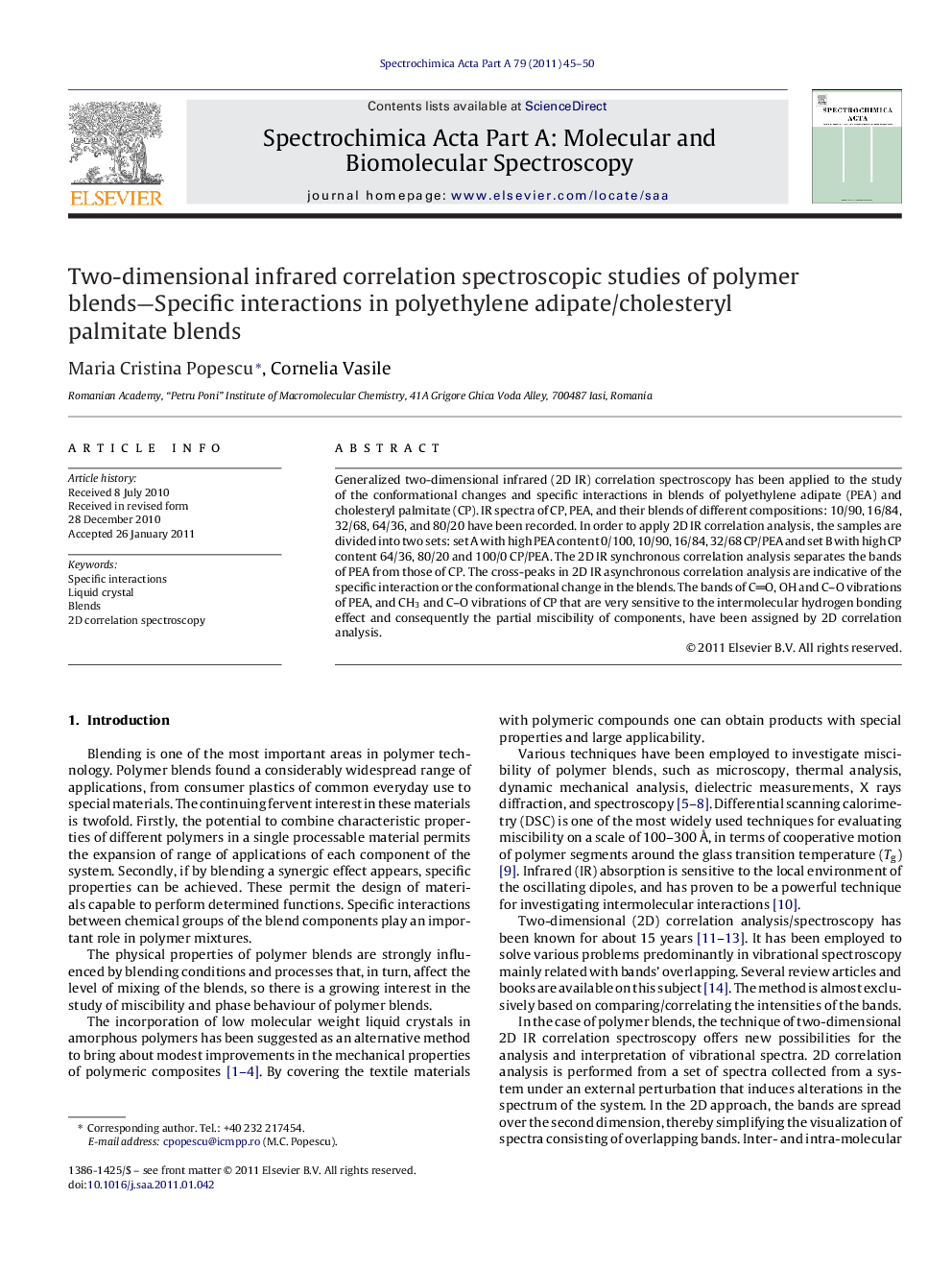| Article ID | Journal | Published Year | Pages | File Type |
|---|---|---|---|---|
| 1235962 | Spectrochimica Acta Part A: Molecular and Biomolecular Spectroscopy | 2011 | 6 Pages |
Generalized two-dimensional infrared (2D IR) correlation spectroscopy has been applied to the study of the conformational changes and specific interactions in blends of polyethylene adipate (PEA) and cholesteryl palmitate (CP). IR spectra of CP, PEA, and their blends of different compositions: 10/90, 16/84, 32/68, 64/36, and 80/20 have been recorded. In order to apply 2D IR correlation analysis, the samples are divided into two sets: set A with high PEA content 0/100, 10/90, 16/84, 32/68 CP/PEA and set B with high CP content 64/36, 80/20 and 100/0 CP/PEA. The 2D IR synchronous correlation analysis separates the bands of PEA from those of CP. The cross-peaks in 2D IR asynchronous correlation analysis are indicative of the specific interaction or the conformational change in the blends. The bands of CO, OH and C–O vibrations of PEA, and CH3 and C–O vibrations of CP that are very sensitive to the intermolecular hydrogen bonding effect and consequently the partial miscibility of components, have been assigned by 2D correlation analysis.
Graphical abstract.Figure optionsDownload full-size imageDownload as PowerPoint slideHighlights► We explored the interaction of PEA and CP by IR and 2D IR correlation spectroscopic methods. ► Composition-dependent spectral variations of PEA –CP blends revealed structural changes. ► 2D synchronous correlation analysis separates the bands of PEA and CP, and detects new bands. ► 2D asynchronous correlation analysis reveals conformational changes or specific interactions. ► The partial miscibility of components is due to CO, OH and C–O (PEA), and CH3 and C–O (CP) groups.
